Like a first love, my first gear purchase is etched in my memory: a Gregory J28 pack. I bought it in 2014 in preparation for my inaugural backpacking trip—a multiday trek through Washington’s Olympic National Park. I moved out west from Ohio a year earlier and fell in love with exploring the state’s rugged landscapes. Planning that first trip felt like a graduation after months of hiking local trails.
Like most people who adopt a new hobby, I spent days researching the gear I’d need and which brands were most dependable. I also did what any recent college graduate does: I tried to buy everything at a discount. Everything but my pack. To my novice eyes, the Gregory looked like more than I needed. Its size and features overshadowed the small, shapeless bag I typically brought on hikes. When I tried it on, the straps felt cushioned and supportive against my shoulders. The spacious hipbelt pockets could fit a couple bars, gels and my phone. The glossy purple fabric looked sleek. It was perfect—or so I thought.
There was one problem with the Gregory J28: It’s a daypack. Meaning, it’s about 20 liters shy of storage space for a multiday trip. I didn’t realize this until I attempted to, well, pack it. But I’d run out of time to exchange it before the trip, so I decided to make it work. I carved out room inside for hiking clothes, snacks, a couple dehydrated meals and smaller essentials like a headlamp and multitool. I fastened a borrowed sleeping bag to the top using string. My trail mate shouldered everything I couldn’t carry—which, to be honest, was a lot (tent, sleeping pads, stove, fuel and more).
Over the next few days, the pack and I trekked dozens of trail miles. It housed the first dehydrated meal I ever cooked with my Jetboil. Its integrated rain fly kept my gear dry during an unexpected shower. The sturdy hipbelt relieved pressure from my back and shoulders, keeping my body happy even after miles of switchbacks. These days, I carry my beloved REI Co-op Flash 55 on overnight trips, but my Gregory continues to be my go-to for day hikes in Seattle. And its origin story is a great conversation starter with those I meet on the trail.
My faux pas is equal parts cautionary and humorous—the two takeaways being to research your gear and to remember that you don’t need a perfect setup to have fun. It’s also a reminder that everyone starts somewhere. Mistakes can be the greatest teachers.
In honor of the too-small pack that ignited my love for backpacking, I asked REI Co-op Members, employees and others to share the story of their first gear purchase. Below are eight tales of adventure, love, loss, growth and belonging.
—Sarah Grothjan, Editor
Jump Ahead
- A Patchwork Tent: I began to think my Passage would end up becoming a Frankenstein shanty, but looking back now, all I see is a tent full of memories that span years.
- A Perfect Pack Fit: Until that moment I had no idea how different packs could feel; it was like putting on glasses for the first time when you don’t realize you need them.
- Ski Gloves Connect Past and Present: My dad gave me the gift of skiing—which I’ve passed on to my own kids—as well as countless memories on the slopes. I’ll always have that.
- A “Real” Pair of Hiking Boots: Investing in these more technical boots also made me more committed to my training, and as we got closer to our big trip, my anticipation grew.
- A Shelter Named Leslie: I spent many mornings waking up, opening the zipper and looking at the most breathtaking views.
- Hiking to New Heights: As a queer woman of color, I don’t often see myself represented in stories about adventure or treks to faraway places. Ahead of the journey, I had to remind myself I could do it.
- From Snowboard Shop to Slopes: Every fall built my resilience, every successful run was a testament to my growth.
- “The Mansion”: For nearly 10 years, this tent was my adventure companion. It gave space for my ideas and deepest reflections to take form as I navigated life
A Patchwork Tent
Name: Ericka Johnson
First Piece of Gear: REI Co-op Passage 2 Tent
REI Co-op Member since 2016

Ten years ago, as I sifted through my parents’ dusty camping gear in their garage, I started to feel inspired to build out my own adventure kit. At the time, I overnighted in a hammock, but had recently begun looking for more security in bear country—hoping to feel less like a human burrito. One day, while roaming around an REI store with armfuls of camping gear, I saw an REI Co-op Passage 2 Tent on display. I nestled inside and instantly found a place for everything, as if moving into a new home. I loved the idea of having an open-door option on a beautiful and breezy day, and I envisioned using the shelter’s hanging pocket to attach my fairy string lights for camp ambience.
The next week, I put my Passage 2 to the test on a 20,000-mile road trip to visit seven national parks out west, starting from Michigan. On one of my first camping stops, in Glacier National Park, I set up in Saint Mary Campground. The winds were gusting up to 40 mph that night, which I thought would pancake my tent, but it held its ground with only one slightly bent tent pole by night’s end. The next morning, I realized this shelter could hang better than my hammock ever could. Fast forward 10 years, and my Passage 2 has followed me through desolate wildernesses, desert flash floods, snowy mountain ranges and spontaneous car living.
Tents are more than shelters. They’re like a home away from home. As a backpacking guide and someone who loves recreating outdoors, I feel it’s important to have a sense of the familiar as I adventure. Some of my best memories of this tent have been the silly repairs it’s seen over the years, like when friends sat fireside stitching together a vestibule after their pup soared through the guyline. There’s also a patch in the rainfly from the time a badger nibbled on it in Utah. After several mishaps and repairs, I began to think my Passage would end up becoming a Frankenstein shanty. But looking back now, all I see is a tent full of memories that span years. There’s value in taking care of your gear so it lasts.
I can’t say enough about how this first piece of gear has provided me with security, comfort and love. It means so much to me to return to a shelter I am familiar with, can trust year after year and can offer to friends when they need it.
It’s pretty sweet to see a piece of gear evolve throughout your life—with its patched holes and new stitching—as if you’re siblings watching each other grow and explore all these different places. It’s helped me understand why my parents kept all their old camping gear: It’s not just a tent, it’s a home.
A Perfect Pack Fit
Name: Ever Meister
First Piece of Gear: REI Co-op Lookout Pack
REI Co-op Member since 2012
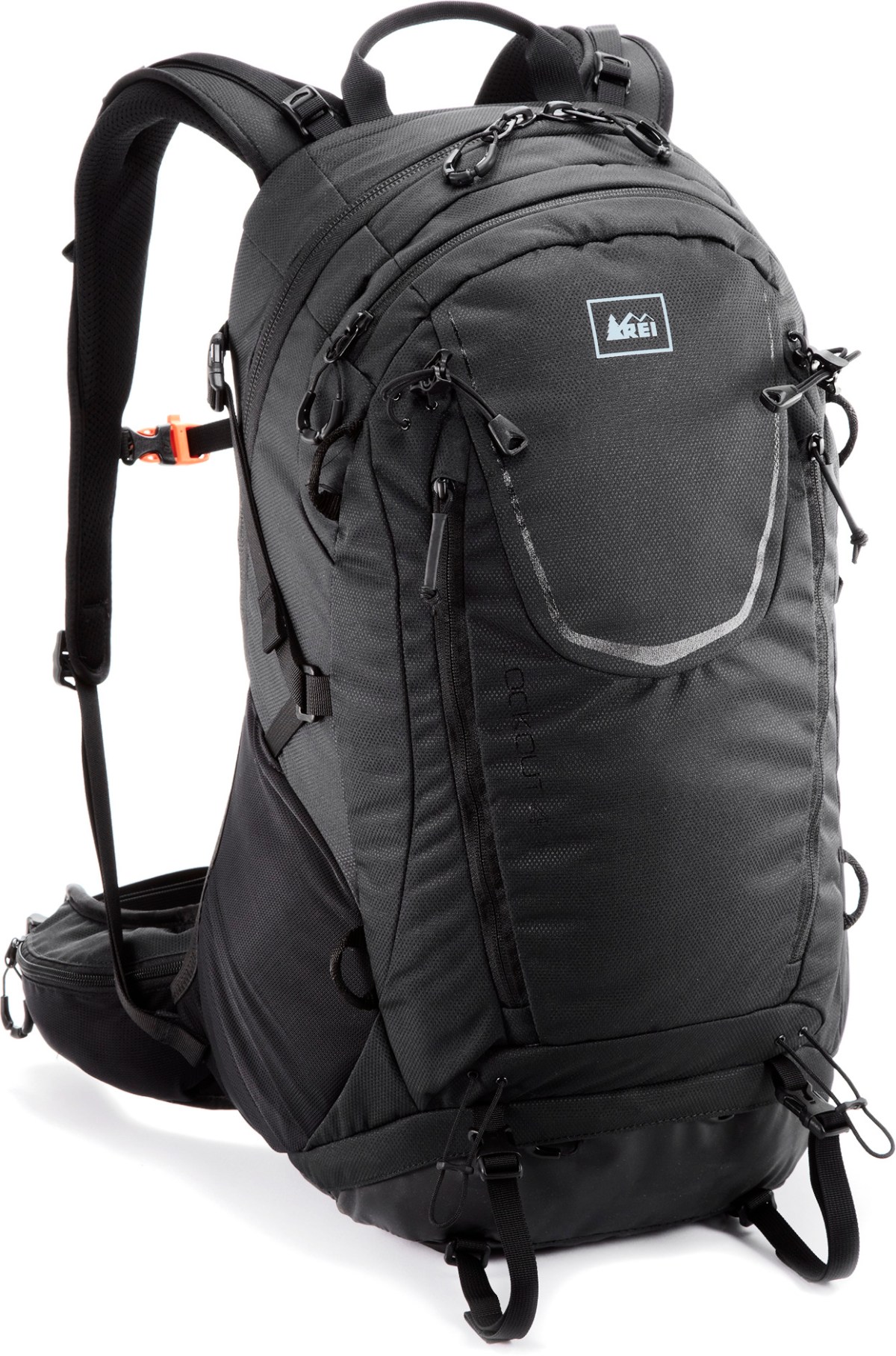
In December of 2012, I took myself on a solo trip through Italy to explore regional differences in espresso, both so I could personally learn more for my coffee career (my calling before I started as an editor at REI) and because I was on assignment for The Washington Post’s travel section. Having never done a solo, hostel-hopping trip through Europe, I went into an REI for the first time and was immediately overwhelmed by the packs, thinking I’d need to figure this out on my own. (I’m notorious for refusing help from staff in stores.)
I walked up and down browsing the racks in REI Soho, not even really knowing what I was looking for, and when a green vest stopped to ask what I needed I don’t think I’ve ever been so relieved in my life. We talked about what things I’d need to bring, how long I’d be there, what kinds of transportation I was looking at in-country (was I walking a lot or taking trains?), and then they started pulling down packs to fit me. Until that moment, I had no idea how different packs could feel; it was like putting on glasses for the first time when you don’t realize you need them. I walked out with a pack that felt made for me, a newfound confidence in the journey I was about to take and an REI membership. The next month I was giddily overcaffeinating in Venice, Florence, Rome and Naples—the trip of my young lifetime. I still have the pack, though it’s worse for wear with a couple puncture holes and a missing buckle on the sternum strap; I just can’t imagine saying “arrivederci” to it yet.
Ski Gloves Connect Past and Present
Name: Amy Jamieson
First Piece of Gear: Gordini AquaBloc Heatrap Gloves
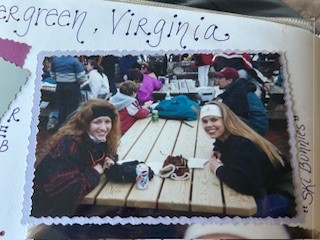
They were a practical, if not slightly underwhelming birthday gift: Gordini AquaBloc Heatrap Gloves. My dad gave them to me when I was a teenager and now, at 47, I still have them. Though a few tears threaten their ability to warm my aging fingers, I can’t bear the thought of committing to a new pair—there’s a lot of history in those hands.
I was not an athletic child. Not necessarily by choice—my single mom worked 40-hour weeks and didn’t have time to cart me around to extracurricular activities, though she did a phenomenal job being everything for my sister and I. When our parents split, seeing Dad became an alternate-weekend occurrence. To make the most of our time together, Dad focused on planning activities around our home state of Maryland, like sailing at Solomons Island; biking the National Mall in Washington, D.C.; or skiing in Virginia come winter. Eventually, skiing became the main activity we bonded over.
Dad discovered skiing later in life and desperately wanted us to learn it as well, so we shared ski trips and lessons. He took us to resorts in Vail and Beaver Creek, Colorado. I took at least a dozen lessons at local mountains like Ski Liberty and Wintergreen Resort before I was 15. Still, it took a while for me to get the hang of it: None of the mechanics came naturally. There were a few heated arguments with Dad about why he was making me ski. One ignited when I wiped out and my skis continued downhill without me—it may have been the moment that helped coin the phrase “redhead with a fiery temper.” On the chairlift later that same day, I barked at him for pushing me to master the infuriating sport, and he said something to the effect of, “You’ll thank me one day.” His words didn’t put a dent in my preteen attitude.
By high school, I finally figured out skiing and even began enjoying it. So, like a professor awarding a diploma, my dad gifted me my very own set of ski gloves. I’ve skied with them ever since—in Telluride, Colorado, during spring break in college; Mount Sunapee in New Hampshire as a newlywed; and now I wear them as a ski mom at Connecticut’s Ski Sundown resort.
My dad died right before Christmas in 2019. Six days later, I skied my local mountain just to be closer to him, wiping frozen tears from my face with the gloves he gifted me all those years ago.
When I look at the gloves, I see his hands—thick, strong and safe. I also see a fabulous gift. The gloves have lasted longer than I could have predicted. But the white stuffing that now pokes through small holes in the fingers signifies something much greater: My dad gave me the gift of skiing—which I’ve passed on to my own kids—as well as countless memories on the slopes. I’ll always have that.
A “Real” Pair of Hiking Boots
Name: Amy Suto
First Piece of Gear: Blundstone Originals Lace Up Boots

I didn’t own “real” hiking boots when I lived in Los Angeles; everyone there just hiked in sneakers. But there are trade-offs to wearing shoes that lack proper tread, and I’d often slip and slide on dirt-path descents, my body working harder just to maintain my balance.
My perspective on acceptable footwear changed in August 2023 when, two months before a trip to Peru, I signed up for the 26-mile Inca Trail hike to Machu Picchu. This four-day trek is a “bucket list” journey for many people. While the trail is famous for winding through ancient Incan ruins, it’s equally known for its steep drop-offs and sharp inclines as it stretches into the Andes. I knew I needed substantial footwear to prevent my transition from mountain climber to unintentional cliff diver.
“I think we need these boots,” my partner, Kyle, said to me one afternoon, seven weeks before the trip. He swiveled his laptop to show me an attractive pair of ankle-high black hiking boots from Blundstone. “These don’t look like hiking boots, so we can wear them for both hiking and to dinner.”
Even after Kyle purchased a pair of his own, I hesitated. At more than $200, the hikers were an investment. But something also felt right about them: With their beautiful dark leather, they’d be versatile—not only functional companions for my future outdoor adventures, but stylish enough to pair with jeans for a night out in the city.
I was shocked by how well they supported my feet. The leather lace-up style made me feel like a real outdoorswoman—not just a casual day hiker who crested small hills by the ocean outside LA. Investing in these more technical boots also made me more committed to my training, and as we got closer to our big trip, my anticipation grew.
What I couldn’t have predicted was that these boots would help protect me during one of the most dangerous days on the trail.
Two months after the purchase, Kyle and I were hiking the Inca Trail. As we climbed to the final mountain peak, lightning struck the horizon and rain started to pour, slicking the stone beneath our feet. I immediately felt grateful for my boots, which gripped the soaked ground with ease—my sneakers would not have handled it as well.
Our guide warned us to keep away from the edge of the trail as the rain came down in sheets. One wrong step, and we could tumble to our deaths. Carefully, we sprinted to a rest stop at the peak that offered the only coverage from the angry weather. We made it just in time, the thunder roaring like an angry god as we huddled with other hikers beneath the hideaway for the next 20 minutes.
Once the clouds parted, we resumed our trek, luckily unscathed. I thanked my boots, which kept me safely planted on the trail. One day of hiking later, I entered Sun Gate, the stone entrance where Inca Trail hikers first behold Machu Picchu in the golden light of the sunrise.
Since then, my Blundstone boots have transformed me from a casual hiker to a confident trekker. I’ve started planning monthly adventures. I’ve traversed trails from Argentina to Japan, and I have another trip planned in Madeira, Portugal. I wore them earlier this year in Cappadocia, where I watched hot air balloons drift into the air on the morning of my 30th birthday.
A Shelter Named Leslie
Name: Jackie Garrido Zawalski
First Piece of Gear: Kelty Crestone 2 Tent
REI Co-op Member since 2008
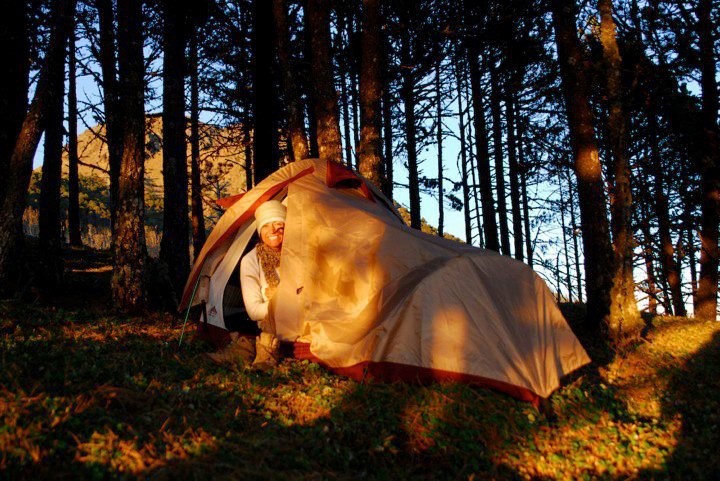
I bought my Kelty two-person tent before backpacking in Central America in 2008. I spent many mornings waking up, opening the zipper and looking at the most breathtaking views—places like Isla de Ometepe in Nicaragua and Volcán Tajmulco in Guatemala. I can’t remember why, but I named the tent “Leslie,” and the name stuck. Years later, when I met my husband, we took Leslie on a seven-day hike around Mount Hood in Oregon. We still have it. We don’t use it as much anymore, but it holds a special place in my heart.
Hiking to New Heights
Name: Aleenah Ansari
First Piece of Gear: Oboz Sawtooth X Mid Waterproof Hiking Boots
REI Co-op Member since 2024
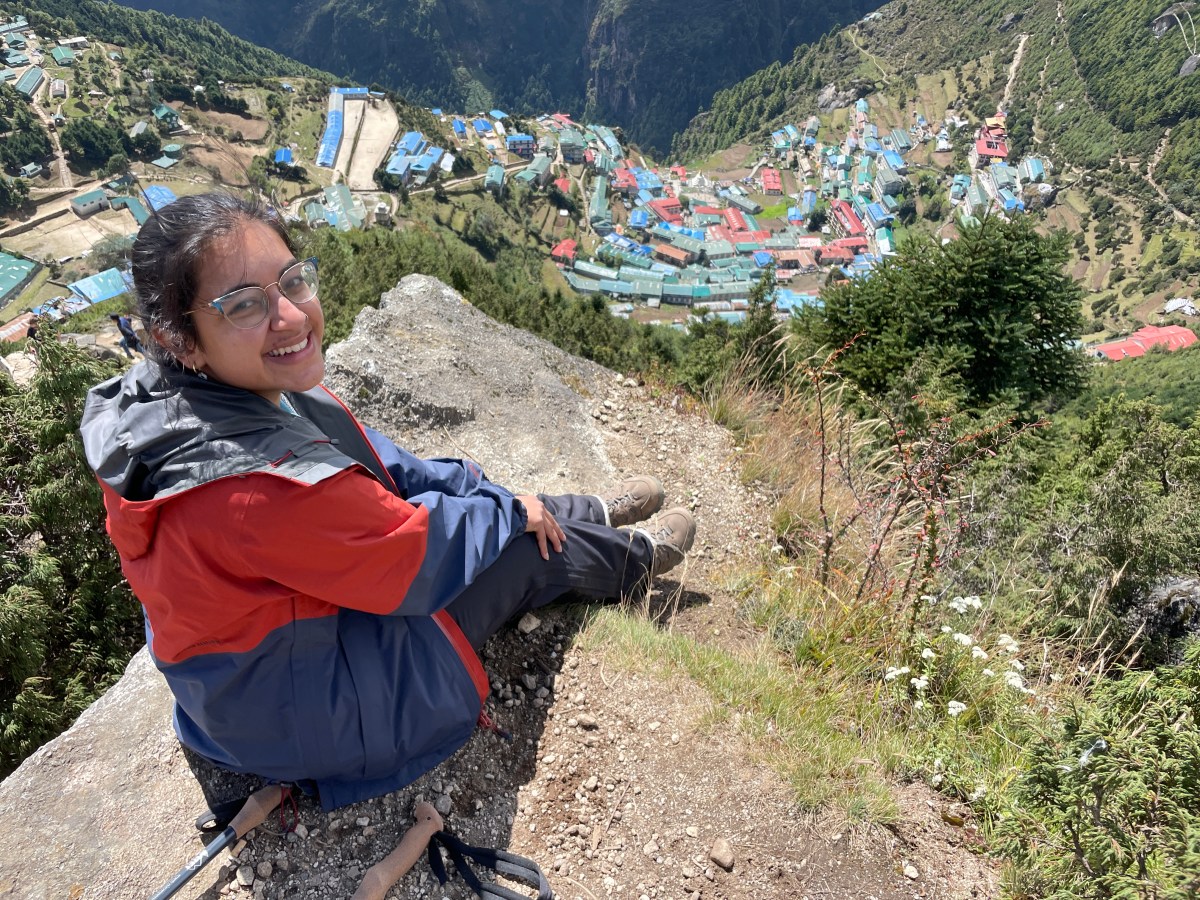
Growing up in the Pacific Northwest, I’ve spent more than half my summers hiking, often in search of wildflowers, waterfalls and lakes. As a kid, each trek through Mount Rainier National Park reminded me why I loved living in Washington. My adventures also fostered a connection to the mountains and sky, which have always called me home.
As my love for hiking grew, so did my need for more technical gear. In 2021, after stumbling in my running shoes while trekking down steep trails in western Washington, I decided to invest in a pair of boots. I figured getting a solid pair was the best place to start building my kit, and I could slowly purchase other gear like hiking poles and a backpack over time. Plus, I was a year away from trekking to Everest Base Camp in Nepal; I needed good shoes to carry me through the journey.
I headed to my nearest REI, the Seattle flagship store, in search of water-resistant hiking boots that provided ankle support and could last hundreds of miles of hiking in my home state and beyond. I left with a pair of Sawtooth X Mid Waterproof Hiking Boots from Oboz, which checked every requirement while still being light enough to travel with. I hiked every week in the months leading up to Everest Base Camp, and each step through western Washington’s trails made me feel a little more prepared for my trek in Nepal. My hiking boots were the one thing that kept me steady, a reminder to focus on staying grounded, both literally and figuratively.
Getting hiking boots was only half the battle, though. The other part was trusting myself to finish the trek to Everest Base Camp. As a queer woman of color, I don’t often see myself represented in stories about adventure or treks to faraway places. Ahead of the journey, I had to remind myself I could do it. After all, years of hiking had prepared me. And I did things that scared me all the time, whether it was giving a TEDx talk, starting a writing business or planning a queer wedding while surrounded by examples of straight ones. If I could do all of that, then I surely deserved to trust myself on the trails. And by the end of the trek, when I made it 17,598 feet up to Everest Base Camp, I couldn’t help but be proud of myself. My dreams—and my hiking boots—had taken me to places I’d never been before.
From Snowboard Shop to Slopes
Name: John Wolf
First Piece of Gear: LTD snowboard
REI Co-op Member since 2009
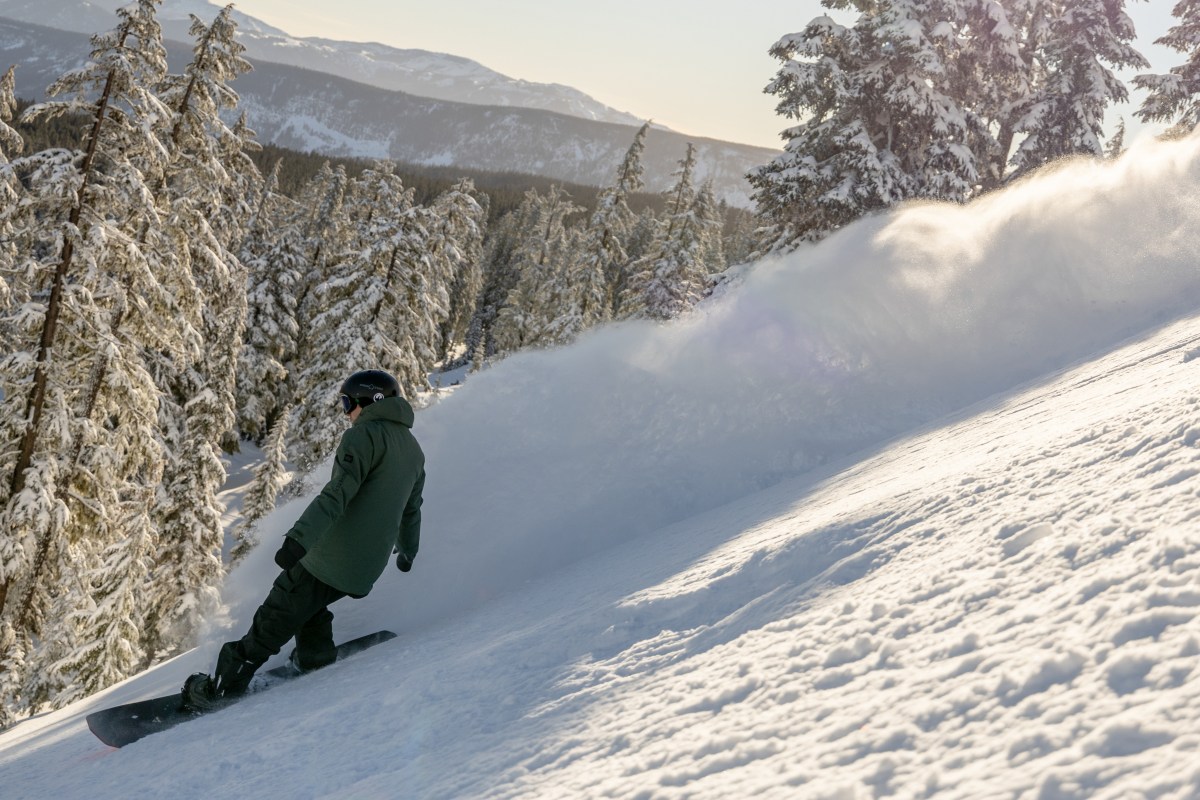
It was a bustling evening at the local ski and snowboard shop when I first saw it—a sleek board displayed prominently on a rack among the others. It had a white and red top sheet and a red base with a white hand making a “rock on” gesture near the tail. Until then, I’d been using a lower-quality snowboard and snow boots, making do with what I had. But this ride was different; it was a gateway to new adventures.
The moment I held it in my hands, I had a surge of excitement. The first time I strapped in and glided down the hill, I felt free. The snowboard responded to my every move, carving through the snow with precision and grace. It was as if it had been made just for me.
This snowboard also accompanied me on my first trip to Colorado. The western mountains, pristine slopes, and fluffy, deep snow were a far cry from my backyard of Pennsylvania, but I was ready. Each run down the mountain was a lesson in perseverance and courage. I learned to navigate the challenging terrain and push myself to new limits. The snowboard became an extension of me, a trusted companion on my journey.
Through this experience, I discovered the value of hard work. Building ramps and moving snow in my backyard was just the beginning. Hiking up the slopes, preparing for each run and practicing relentlessly taught me the importance of dedication and effort. Every fall built my resilience, every successful run was a testament to my growth.
More than anything, this snowboard taught me to channel my fears into confidence. Standing at the top of a steep slope, heart pounding, I learned to trust my skills and preparation. With each descent, I felt my fear transform into exhilaration, my hesitation into determination. It was a powerful metaphor for life—facing challenges head-on, preparing and progressing step by step.
That first snowboard was a catalyst for growth and adventure. It opened doors to new experiences and taught me invaluable lessons that I carry with me to this day. Every time I strap into a snowboard, I remember that first visit to the ski shop and the incredible journey it set me on.
“The Mansion”
Name: Lestarya Molloy
First Piece of Gear: Coleman Red Canyon 8-person tent
REI Co-op Member since 2012
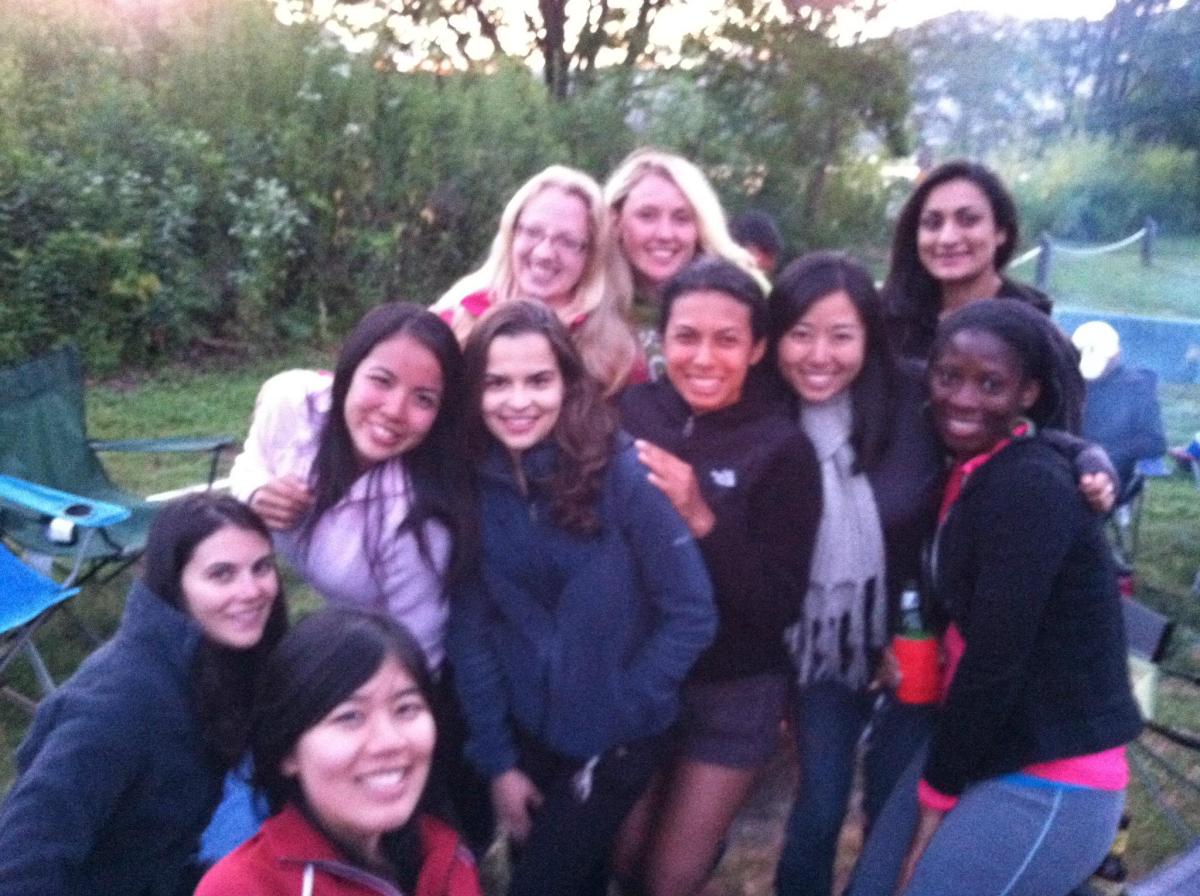
Growing up, I wasn’t the kid climbing trees or playing in the dirt. Instead, I found solace in long walks outside and hikes with friends. After years of day hiking, I eventually became curious about camping. I wanted the overnight nature experience, so I booked a campsite at Lockaby Campground in Oregon’s Mount Hood National Forest and invited some pals to join.
Most of us were new to camping, and none of us owned a tent. So, we chipped in money toward a communal eight-person Coleman tent that was tall enough to stand in. The spaciousness to move around, change clothes, and get in and out was a plus. It was also important to me that the tent felt like a home for us to enjoy.
My African American mom and Indonesian dad instilled in me at a young age the importance of education and making a difference in the world. But when they both passed away when I was 11, I learned that time is a gift. So while I worked hard to practice their values, I also prioritized free time to recharge my battery. My spacious, eight-person tent became a home away from home not just for myself, but also for my friends who have become like family. By having this more spacious shelter, there was always room for them—so much so that we referred to the tent as “The Mansion”.
During that first camping trip, I fell in love with it all: waking up to lush, tall trees in the mornings; the fresh air gracing my face; hearing the soft flow of the river; having no agenda other than to simply be. Anything was possible.
For nearly 10 years, this tent was my adventure companion. It gave space for my ideas and deepest reflections to take form as I navigated life—continuously learning and growing in my work, deepening lifelong friendships and falling in love with my now husband, Scott.
As my friends and I took more adventures to campsites from the coast to the mountains, I found myself becoming more comfortable with the nuances of setting up our shelter, like using a footprint to protect the tent floor or putting the rainfly on top to keep everyone dry and warm. As these skills became second nature, the tent became even more of a home: A place where we told stories, played card games, reveled in “aha” moments and had amazing nights of sleep.
The Mansion proved to be more than a shelter. It was an oasis for relaxation, reflection and inspiration, for pure joy, fun and adventure.
